Suppose I have a matrix of dimension [4x4], and a vector of [16x1], I need to multiply every 4 element in the vector in one element in the matrix, (instead of multiplying element in row by element in vector), how can I do that using loop ?
For example here below, the results of the first four elements in the resulted vector as shown in the below example, then the same thing for the second, third and fourth rows in the matrix. :

So the results in that example is supposed to be [16x1]
Thank you